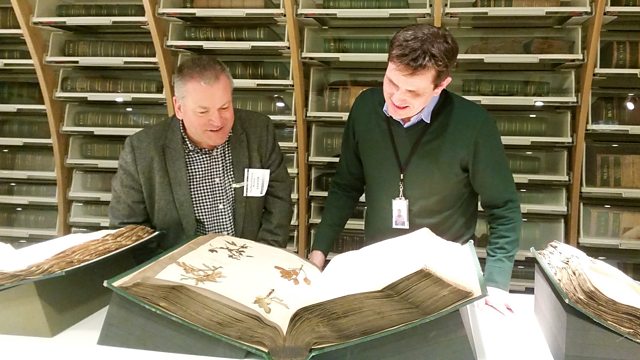Natural History Museum
Peter Gibbs is at the Natural History Musuem with Matt Biggs, Pippa Greenwood and Chris Beardshaw.
Peter Gibbs and the team are at the Natural History Museum. Matt Biggs, Pippa Greenwood and Chris Beardshaw take questions on an array of horticultural conundrums.
The panel discuss how to encourage moss into a garden, designs for a community planting project and showing house plants some tender loving care.
Matt Biggs goes behind the scenes at the museum in search of some horticultural treasures.
Produced by Hannah Newton
Assistant Producer: Laurence Bassett
A Somethin' Else production for ���˿��� Radio 4.
Last on
More episodes
Previous
Next
Fact Sheet
Q. When I was a boy my father would arrange all of his parsnips in sets - top to tail - and allow the frost to get to them. Is this practice beneficial or is it just nonsense?
��
A. Pippa – It will improve the sugar content.
Chris – It is called clamping and the idea is to take the roots out of the ground so that you can prepare the ground for the next season. You layer the vegetables with straw and soil to create a pyramid. You keep the moisture in by entombing them.
Matt – This method is usually used on a large scale. You can just leave them in the ground and cover them with straw.
��
Q. I have a prolific yucca that I would like to tame. What should I do?
��
A. Matt – I would appreciate them as they are by surrounding them with gravel and creating a desert environment. Plant salvias and desert annuals. Take advantage of the microclimate of the city.
��
Q. Each winter I don’t have enough compost or leaf mould for all beds.�� How do I know which plants to choose?
��
A. Matt – I would prioritise the plants that like moist conditions like woodland plants.
Pippa – It is very easy to make more leaf mould in black bin liners. Add some water if the leaves are dry and prick holes in the side of the bag. Oak and beach leaves will make the best quality leaf mould.
��
Q. Is it necessary to rotate all crops? It can be difficult to move frames etc.
��
A. Pippa – I don’t believe in doing it by the book because you should be growing exactly what you like. Peas and beans are prone to soil-born infections so probably should be moved.
Matt – I often forget where things were planted the year before. You are often fine keeping the same thing in for a few years. Be sure to keep the soil in good condition.
Pippa – Don’t compost things that have had infection.
Chris – You only really have to rotate if you are growing intensively. You could try forest gardening where you grow everything in one bed. You end up with pockets of planting by scattering seeds where you have space. This creates a colony of plants with different demands on the same space.
��
Q. How can I prevent my tree ferns from dying in the winter?
��
A. Pippa – Often it is a problem with moisture rather than the cold. We tend to wrap them up and the water can get trapped or rest on the surface.
Matt – The growth tip needs to be protected. You can also leave the old fronds as further insulation.
Chris – They are vertical rhizome plants and we should protect the trunk as well as the top. You can wrap heather screening around it.
Pippa – Pots can also be a problem because the roots are above the ground, so you can bubble wrap around a pot.
��
Q. How should I repot my house plants, particularly succulents and cacti?
��
Pippa – Spring is the best time as they are moving into growth. Use proper succulent or cacti compost rather than multipurpose. Don’t choose too large a pot as you will get a layer of soggy compost. Drainage is important, so use some horticultural grit as a layer on the surface.
Matt – Don’t fill the pot with too much compost. You can use kitchen tongs for moving cacti. Use a cane to firm the compost rather than your fingers.
Chris – It is worth using unglazed terracotta because it is porous and moisture will be drawn away.
��
Q. Last year the whole street planted sunflowers. What could we plant this year?
��
Chris – You could go for an easy option such as beans. Try ‘Painted Lady’. You could also grow something exotic like melons. If it is a sheltered area you could grow them on a sunny wall in a fertile bed.
Pippa – Sweet peas aren’t too difficult but will require a reasonable amount of water. You could also try courgettes with their bright yellow flowers and plentiful crop. Try something like ‘Tondo Chiaro di Nizza’ for spherical courgettes.
Broadcasts
- Fri 3 Mar 2017 15:00���˿��� Radio 4 FM
- Sun 5 Mar 2017 14:00���˿��� Radio 4 FM
Six of GQT’s naughtiest gardening innuendos
When Gardeners' Question Time got mucky.
Podcast
-
![]()
Gardeners' Question Time
Horticultural programme featuring a group of gardening experts


